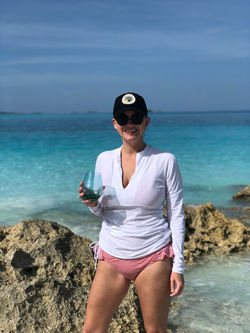
Atypical Erin
a little about me
Hi, I’m Erin, a healthcare marketing director with a passion for simplifying the complex and making meaningful connections. My career is built on bridging the gap between corporate strategy and authentic storytelling, with a focus on mental health advocacy and creating content that resonates.
With years of experience leading teams, crafting compelling campaigns, and navigating the challenges of a dynamic workplace, I’ve learned how to balance the art of creativity with the science of strategy. Whether it’s shaping a brand’s identity or breaking down barriers in corporate spaces, I’m all about finding innovative ways to make an impact.
When I’m not immersed in marketing plans or brainstorming big ideas, you’ll find me with a latte in hand, championing conversations around workplace wellness or exploring the many ways creativity can thrive in even the most structured environments.
 Erin under her weighted blanketErin under her weighted blanket |  Erin sniffing a bouquet of flowersLife is a bouquet, sniff it. |  Erin with the sun hitting her faceTrip to Springfield, MO |
|---|---|---|
 Erin holding a Minnie mug of coffeeDisney is my happy place. |  Erin making a silly faceSelfie! |  Erin in exumaExuma is one of the most gorgeous places I’ve visited. |
Frequently asked questions
newsletter
Sign up today and receive atypical content right to your inbox.





